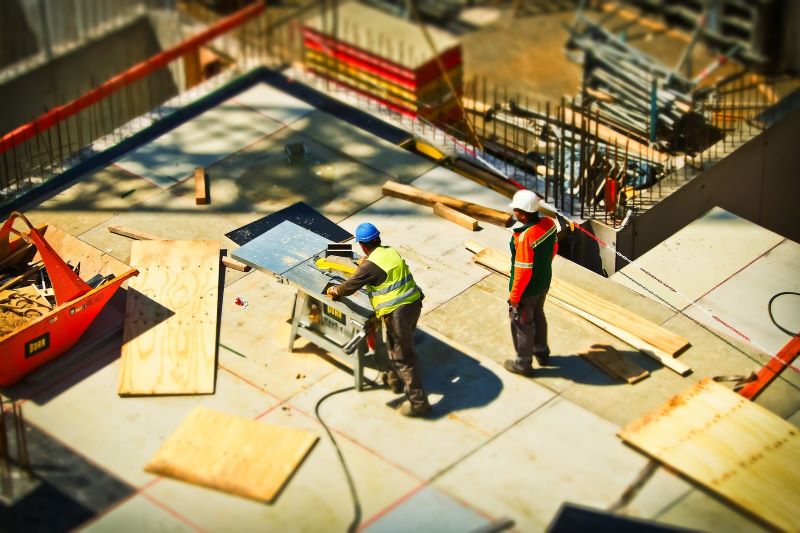As a homeowner, you probably expect that certain elements of your home will have to be repaired or replaced over time, and the same rings true for common elements and structural components of community associations. However, large capital repair projects in associations are undoubtedly more complicated and expensive than your average home repair. And, of course, you never know when something may decide to give out or simply stop working. So, how do board members best prepare their associations for the unexpected? Being knowledgeable about your association’s insurance policies, having reserve studies done every 3-5 years, and properly managing the association’s reserve account will put your community in the best position possible when it comes time to handle large, unexpected repair projects.
Damages That may not be Covered by Insurance
Depending on the type of damage your community experiences, a loss may or may not be covered by insurance. Why? Well, there are a few reasons. First, for something to be covered by insurance, an insurable event must have occurred, and, of course, the damaged component must be covered. The key here is that an event must have taken place – the damage must be a result of “something happening” (say, a fire or a hurricane), not just of long-term deterioration. It is advisable that board members always stay up to date on what is and is not covered by the association’s insurance policies so that no unpleasant surprises pop up when damages occur.
What are some examples of things that typically aren’t covered? Things like failure resulting from wear and tear, construction defects, falling trees, failing infrastructure, and flood damage that occur outside the scope of flood insurance may not be covered under your association’s master policy.
Failure of Long-Life Components
While it’s not always the case, the failure of long-life components can sometimes be the result of neglecting to carry out preventive maintenance. Other times, these failures may simply stem from a lack of knowledge – you can’t see buried drainage pipes, for example, so you may not know there is anything wrong with them until it’s too late. Due to either of these reasons, insurance policies may not cover these failures. If signs of deterioration have gone ignored and catastrophic damage occurs, the insurance company can easily claim that the fault lies with the association, and they’re not required to cover the event.
Though the recent collapse of a condominium building in south Florida is an extreme example, it presents several things worth noting when it comes to the upkeep of common elements, especially in condominiums. In the Florida case, there had been several reports of failures within the structures, cracks in concrete, and other desperately needed repairs that had largely gone ignored. So, what should board members do to prevent such catastrophes from affecting their communities? One thing is to employ the expertise of professionals like engineers and reserve study specialists (RSPs). If your community has had an engineer or RSP visit in the past few years, pull out the list of repair recommendations they made and go over it carefully. Did you have those repairs made? If not, give that person a call and set a time for them to revisit the property and discuss what repairs need to be made and how soon they should be addressed.
Funding and Planning for the Unexpected
Though disasters will inevitably happen no matter how well-prepared you are, having the proper plans and funding in place will set your association in a prime position for recovery when these things do occur.
Insurance, of course, is an important factor here. Be sure you have the right types and amounts of coverage. If you’re not sure about this, speak with your insurance agent to see if you need to make any updates to your existing policies or purchase additional coverages.
Another important preventative measure board members can take is having capital reserve studies done every 3-5 years. The typical reserve study will estimate the need for various capital repairs over a 20-30-year time span. Many structural components, however, are assumed to have a lifetime of 50-100 years, but reserve studies can aid in making projections that will help your association prepare for those repairs/replacements as well. These studies must be updated at intervals to adjust for actual vs. projected wear and tear, inflation, return on investment, or unexpected component replacement that will change the long-term plan.
What does a Reserve Study Involve?
When a reserve study is conducted, an RSP will carefully inspect various elements of your association and make recommendations on repairs that are currently needed as well as make projections on when larger elements (think roof replacements or new roads if your association has private streets, for example) may need repair or replacement in the future. They will also project the future cost of these items based on inflation and rising costs of materials and labor and help you determine how much should be kept in your reserve account to cover these expenses.
When having a reserve study done, board members should take an active role – join the specialist during the inspection and ask questions so that you become familiar with the various elements of your community and gain an understanding of the expected lifetime of structures, what various damages look like, things like that.
Funding the Reserve Account
How should you fund your association’s reserve account? Reserve specialists can help there too as they’re able to look at your current financials, project how much the account will hold over a certain number of years, and make recommendations on the balance that should be kept in the account to keep your association protected. To fund the reserve account, associations have several options – special assessments, loans, or increasing regular assessments to name a few. However, you should always consult with your community manager, bankers, attorneys, and other professionals prior to making funding decisions. And, when it comes to collecting and spending the association’s funds, being transparent with the membership is of the utmost importance.
Consulting Professionals
In addition to reserve study specialists, other professionals are key in helping you prepare for the unexpected. Community managers, insurance professionals, service providers, engineers, and bankers can all assist you in making sure that your community is prepared should disaster strike. By hiring professionals and following their recommendations, the board is fulfilling its fiduciary duty and protecting the association against potential future liabilities.
Though anticipating disasters isn’t necessarily a stress-free endeavor, as they say, “An ounce of prevention is worth a pound of cure”. If you keep the various elements of your community association in good repair, conduct regular reserve studies, handle the association’s finances appropriately, and employ the assistance of professionals, you’ll be ready to hit the ground running when the worst occurs.


